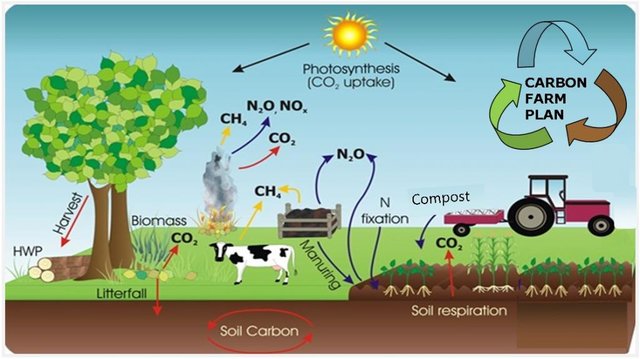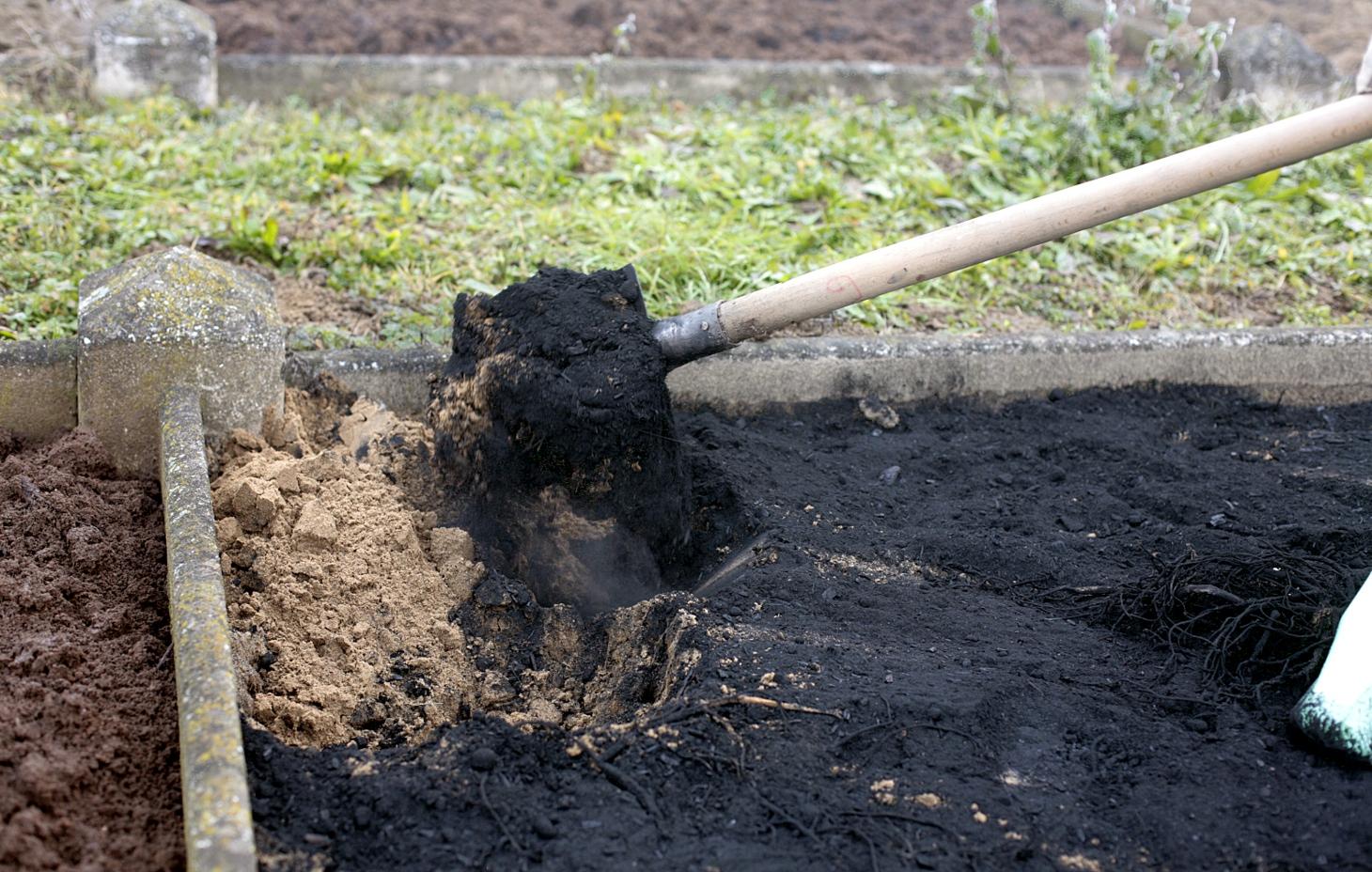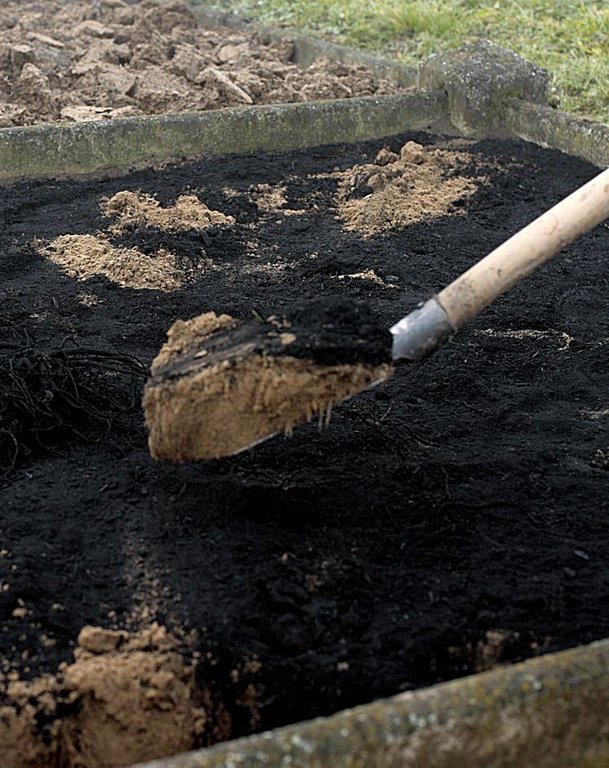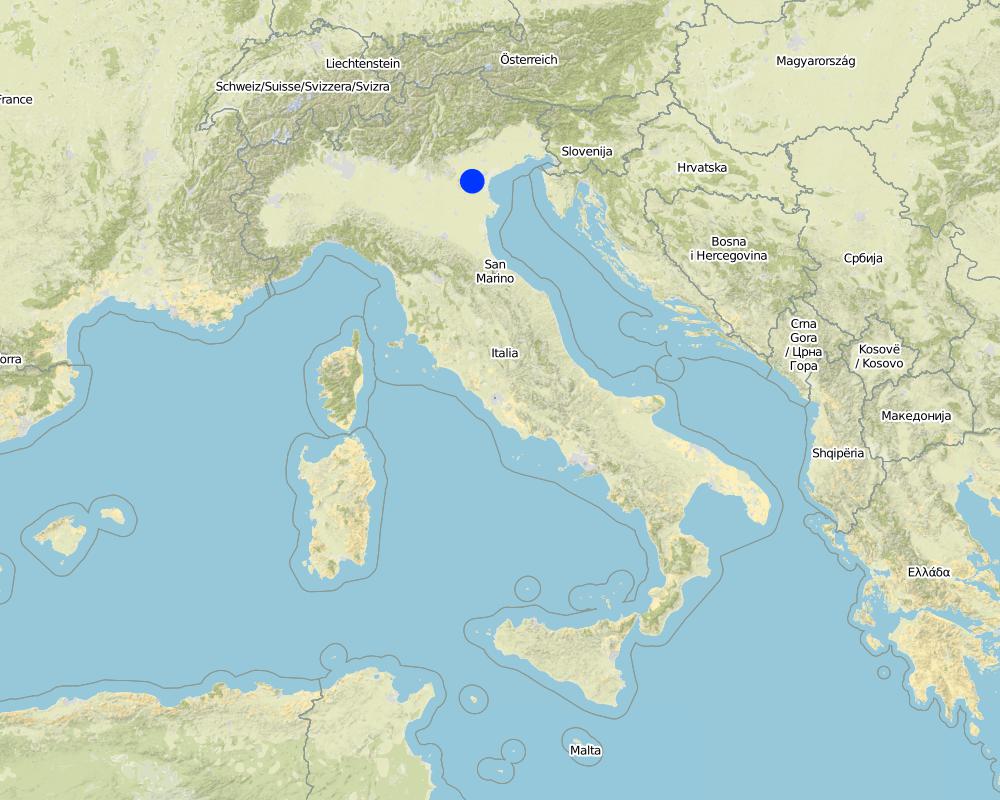Biochar application as a soil amendment [Italie]
- Création :
- Mise à jour :
- Compilateur : Nicola Dal Ferro
- Rédacteur : –
- Examinateurs : Fabian Ottiger, Alexandra Gavilano
Applicazione di biochar come ammendante organico
technologies_1279 - Italie
Voir les sections
Développer tout Réduire tout1. Informations générales
1.2 Coordonnées des personnes-ressources et des institutions impliquées dans l'évaluation et la documentation de la Technologie
Spécialiste GDT:
Morari Francesco
University of Padova
Italie
Nom du projet qui a facilité la documentation/ l'évaluation de la Technologie (si pertinent)
Preventing and Remediating degradation of soils in Europe through Land Care (EU-RECARE )Nom du ou des institutions qui ont facilité la documentation/ l'évaluation de la Technologie (si pertinent)
University of Padova (UNIPD) - Italie1.3 Conditions relatives à l'utilisation par WOCAT des données documentées
Le compilateur et la(les) personne(s) ressource(s) acceptent les conditions relatives à l'utilisation par WOCAT des données documentées:
Oui
1.5 Référence au(x) Questionnaires sur les Approches de GDT (documentées au moyen de WOCAT)

Carbon farming [Italie]
Managing land, water, plants and animals to meet the landscape restoration, climate change and food security.
- Compilateur : Nicola Dal Ferro
2. Description de la Technologie de GDT
2.1 Courte description de la Technologie
Définition de la Technologie:
Application of fine-grained charcoal as an amendment to improve the soil quality and mitigate GHG emissions from croplands
2.2 Description détaillée de la Technologie
Description:
Biochar is a fine-grained charcoal, rich in refractory organic carbon compounds. Biochar is produced from pyrolysis of plant and waste feedstock, i.e. during thermal decomposition of biomass in partial or total absence of oxygen. As a soil amendment, biochar can favour a long-term stabilisation of carbon stocks, serving as a net withdrawal of atmospheric carbon dioxide. From an agronomic point of view, high organic carbon input from biochar can enhance the nutrient and water retention capacity of the amended soil, reducing the total fertilizer requirements.
Purpose of the Technology: Therefore, the application of biochar is proposed as a strategy to reduce the climate and environmental impact of cropland systems as well as improve the soil quality by enhancing its physical-chemical characteristics.
Establishment / maintenance activities and inputs: Due to high recalcitrance of its C compounds, fine-grained biochar can be applied occasionally in the field, although its long-term effect is still being studied. High doses of biochar can be distributed (e.g. > 10 t C ha-1) just before ploughing in order to favour its incorporation, mixing and interaction with soil particles.
Natural / human environment: Potentially, the high stability of biochar C-compounds favours a reduction of GHG emissions by increasing the soil carbon stocks. Potentially, the soil can benefit from biochar application by improving its structure, the water retention capacity and finally the nutrient cycling. Nevertheless, it must be underlined that such technique is still in its infancy and needs testing before it is widespread as an agricultural practice. Although the biochar costs of production are not available, it must be noted that, due to the occasional application, the management costs would be low.
2.3 Photos de la Technologie
2.5 Pays/ région/ lieux où la Technologie a été appliquée et qui sont couverts par cette évaluation
Pays:
Italie
Région/ Etat/ Province:
Italy
Autres spécifications du lieu:
Veneto region
Spécifiez la diffusion de la Technologie:
- répartie uniformément sur une zone
S'il n'existe pas d'informations exactes sur la superficie, indiquez les limites approximatives de la zone couverte:
- < 0,1 km2 (10 ha)
Commentaires:
This is only a research trial that is now performed at the experimental farm of the University of Padova.
Map
×2.7 Introduction de la Technologie
Spécifiez comment la Technologie a été introduite: :
- au cours d'expérimentations / de recherches
3. Classification de la Technologie de GDT
3.2 Type(s) actuel(s) d'utilisation des terres, là où la Technologie est appliquée

Terres cultivées
- Cultures annuelles
Nombre de période de croissance par an: :
- 1
Précisez:
Longest growing period in days: 210Longest growing period from month to month: March to OctoberSecond longest growing period in days: 180
Commentaires:
Major land use problems (compiler’s opinion): Soils in the low Venetian plain of the Veneto region generally suffer from a loss of soil organic matter (SOM) that is strongly affected by their natural texture and climatic conditions. Moreover, in the last 50 years intensive tillage practices contributed to a further SOM decrease estimated at 0.02-0.58 t/ha/y of carbon and high intensive monoculture practices implied oversimplification of agro-ecosystems and decline of soil biodiversity. Finally, in the last few years attention is given to excessive GHG emissions from croplands.
Major land use problems (land users’ perception): Decrease of productivity. However to date, few farmers have adopted conservation practices in order to reduce a decline of soil fertility and water quality, symptom of poor perception of the problem.
3.4 Approvisionnement en eau
Approvisionnement en eau des terres sur lesquelles est appliquée la Technologie:
- mixte: pluvial-irrigué
3.5 Groupe de GDT auquel appartient la Technologie
- gestion intégrée de la fertilité des sols
3.6 Mesures de GDT constituant la Technologie

pratiques agronomiques
- A2: Matière organique/ fertilité du sol
Commentaires:
Main measures: agronomic measures
Type of agronomic measures: manure / compost / residues
3.7 Principaux types de dégradation des terres traités par la Technologie

dégradation chimique des sols
- Cn: baisse de la fertilité des sols et réduction du niveau de matière organique (non causée par l’érosion)
Commentaires:
Main type of degradation addressed: Cn: fertility decline and reduced organic matter content
Main causes of degradation: soil management, crop management (annual, perennial, tree/shrub), population pressure
3.8 Prévention, réduction de la dégradation ou réhabilitation des terres dégradées
Spécifiez l'objectif de la Technologie au regard de la dégradation des terres:
- réduire la dégradation des terres
- restaurer/ réhabiliter des terres sévèrement dégradées
Commentaires:
Main goals: mitigation / reduction of land degradation, rehabilitation / reclamation of denuded land
Secondary goals: prevention of land degradation
4. Spécifications techniques, activités, intrants et coûts de mise en œuvre
4.1 Dessin technique de la Technologie
Spécifications techniques (associées au dessin technique):
Technical knowledge required for field staff / advisors: moderate
Technical knowledge required for land users: moderate
Main technical functions: increase in organic matter
Secondary technical functions: improvement of topsoil structure (compaction), increase in nutrient availability (supply, recycling,…), increase / maintain water stored in soil
Agronomic measure: Biochar
Material/ species: Plant feedstock
Remarks: 10-40 t C ha-1 still being studied
4.2 Informations générales sur le calcul des intrants et des coûts
autre/ monnaie nationale (précisez):
€
Indiquez le taux de change des USD en devise locale, le cas échéant (p.ex. 1 USD = 79.9 réal brésilien): 1 USD = :
0,8
Indiquez le coût salarial moyen de la main d'œuvre par jour:
21.00
4.3 Activités de mise en place/ d'établissement
| Activité | Calendrier des activités (saisonnier) | |
|---|---|---|
| 1. | Biochar input |
4.4 Coûts et intrants nécessaires à la mise en place
| Spécifiez les intrants | Unité | Quantité | Coûts par unité | Coût total par intrant | % des coût supporté par les exploitants des terres | |
|---|---|---|---|---|---|---|
| Autre | Biochar 20t | ha | 1,0 | 6000,0 | 6000,0 | 100,0 |
| Coût total de mise en place de la Technologie | 6000,0 | |||||
| Coût total de mise en place de la Technologie en dollars américains (USD) | 7500,0 | |||||
Commentaires:
Life span of biochar is several years but still under study.
4.6 Coûts et intrants nécessaires aux activités d'entretien/ récurrentes (par an)
Commentaires:
Costs are only indicative at the moment (2015 y) since a real market is not available.
4.7 Facteurs les plus importants affectant les coûts
Décrivez les facteurs les plus importants affectant les coûts :
Currently biochar is difficultly available in the market and some estimates report a high cost (300 US $/ t). However, the application of biochar can be done once every several years. As a result, costs are mainly as an initial investment.
5. Environnement naturel et humain
5.1 Climat
Précipitations annuelles
- < 250 mm
- 251-500 mm
- 501-750 mm
- 751-1000 mm
- 1001-1500 mm
- 1501-2000 mm
- 2001-3000 mm
- 3001-4000 mm
- > 4000 mm
Zone agro-climatique
- subhumide
Thermal climate class: temperate
5.2 Topographie
Pentes moyennes:
- plat (0-2 %)
- faible (3-5%)
- modéré (6-10%)
- onduleux (11-15%)
- vallonné (16-30%)
- raide (31-60%)
- très raide (>60%)
Reliefs:
- plateaux/ plaines
- crêtes
- flancs/ pentes de montagne
- flancs/ pentes de colline
- piémonts/ glacis (bas de pente)
- fonds de vallée/bas-fonds
Zones altitudinales:
- 0-100 m
- 101-500 m
- 501-1000 m
- 1001-1500 m
- 1501-2000 m
- 2001-2500 m
- 2501-3000 m
- 3001-4000 m
- > 4000 m
5.3 Sols
Profondeur moyenne du sol:
- très superficiel (0-20 cm)
- superficiel (21-50 cm)
- modérément profond (51-80 cm)
- profond (81-120 cm)
- très profond (>120 cm)
Texture du sol (de la couche arable):
- moyen (limoneux)
Matière organique de la couche arable:
- moyen (1-3%)
Si disponible, joignez une description complète du sol ou précisez les informations disponibles, par ex., type de sol, pH/ acidité du sol, capacité d'échange cationique, azote, salinité, etc.
Soil fertility is low
Soil drainage/infiltration level is medium
Soil water storage capacity is medium
5.4 Disponibilité et qualité de l'eau
Profondeur estimée de l’eau dans le sol:
< 5 m
Disponibilité de l’eau de surface:
bonne
Qualité de l’eau (non traitée):
eau potable
5.5 Biodiversité
Diversité des espèces:
- moyenne
5.6 Caractéristiques des exploitants des terres appliquant la Technologie
Orientation du système de production:
- commercial/ de marché
Niveau de mécanisation:
- mécanisé/ motorisé
Indiquez toute autre caractéristique pertinente des exploitants des terres:
Difference in the involvement of women and men: Farmers in the Veneto region are traditionally males due to historical and cultural reasons.
Population density: 200-500 persons/km2
Annual population growth: 0.5% - 1%
5.7 Superficie moyenne des terres utilisées par les exploitants des terres appliquant la Technologie
- < 0,5 ha
- 0,5-1 ha
- 1-2 ha
- 2-5 ha
- 5-15 ha
- 15-50 ha
- 50-100 ha
- 100-500 ha
- 500-1 000 ha
- 1 000-10 000 ha
- > 10 000 ha
Commentaires:
Average area of land owned or leased by land users applying the Technology: Also 15-50 ha
5.8 Propriété foncière, droits d’utilisation des terres et de l'eau
Propriété foncière:
- individu, sans titre de propriété
- individu, avec titre de propriété
Droits d’utilisation des terres:
- loué
- individuel
Droits d’utilisation de l’eau:
- communautaire (organisé)
- loué
5.9 Accès aux services et aux infrastructures
santé:
- pauvre
- modéré
- bonne
éducation:
- pauvre
- modéré
- bonne
assistance technique:
- pauvre
- modéré
- bonne
emploi (par ex. hors exploitation):
- pauvre
- modéré
- bonne
marchés:
- pauvre
- modéré
- bonne
énergie:
- pauvre
- modéré
- bonne
routes et transports:
- pauvre
- modéré
- bonne
eau potable et assainissement:
- pauvre
- modéré
- bonne
services financiers:
- pauvre
- modéré
- bonne
6. Impacts et conclusions
6.1 Impacts sur site que la Technologie a montrés
Impacts socio-économiques
Production
risque d'échec de la production
Revenus et coûts
dépenses pour les intrants agricoles
Impacts socioculturels
Improved livelihoods and human well-being
Commentaires/ spécifiez:
So far the technology is in its infancy and improvements in livelihoods and human well-being are still not conceivable
Impacts écologiques
Sols
humidité du sol
cycle/ recharge des éléments nutritifs
matière organique du sol/ au dessous du sol C
Réduction des risques de catastrophe et des risques climatiques
émissions de carbone et de gaz à effet de serre
6.2 Impacts hors site que la Technologie a montrés
capacité tampon/de filtration
6.3 Exposition et sensibilité de la Technologie aux changements progressifs et aux évènements extrêmes/catastrophes liés au climat (telles que perçues par les exploitants des terres)
Changements climatiques progressifs
Changements climatiques progressifs
| Saison | Augmentation ou diminution | Comment la Technologie fait-elle face à cela? | |
|---|---|---|---|
| températures annuelles | augmente | bien |
Extrêmes climatiques (catastrophes)
Catastrophes météorologiques
| Comment la Technologie fait-elle face à cela? | |
|---|---|
| pluie torrentielle locale | bien |
| tempête de vent locale | bien |
Catastrophes climatiques
| Comment la Technologie fait-elle face à cela? | |
|---|---|
| sécheresse | bien |
Catastrophes hydrologiques
| Comment la Technologie fait-elle face à cela? | |
|---|---|
| inondation générale (rivière) | bien |
Autres conséquences liées au climat
Autres conséquences liées au climat
| Comment la Technologie fait-elle face à cela? | |
|---|---|
| réduction de la période de croissance | bien |
6.4 Analyse coûts-bénéfices
Commentaires:
Short-term and long-term benefits are still being studied, therefore right now it is not possible to evaluate benefits
6.5 Adoption de la Technologie
Commentaires:
There is a little trend towards spontaneous adoption of the Technology
Comments on adoption trend: The technology is not yet applied in the field, although tested and proposed by research institutes in order to imporve soil fertility and soil organic matter content.
6.7 Points forts/ avantages/ possibilités de la Technologie
| Points forts/ avantages/ possibilités du point de vue du compilateur ou d'une autre personne ressource clé |
|---|
| Enhances soil organic carbon content in the long-term |
| Improves soil water retention and nutrient cycling |
| Mitigates GHG emissions of cropland systems |
6.8 Faiblesses/ inconvénients/ risques de la Technologie et moyens de les surmonter
| Faiblesses/ inconvénients/ risques du point de vue du compilateur ou d'une autre personne ressource clé | Comment peuvent-ils être surmontés? |
|---|---|
| Still not completely known the long-term effects on soil properties and biodiversity |
7. Références et liens
7.1 Méthodes/ sources d'information
7.2 Références des publications disponibles
Titre, auteur, année, ISBN:
Physico-chemical properties and microbial responses in biochar-amended soils: Mechanisms and future directions, Gul et al., 2015. Agriculture, Ecosystems & Environment (206), 46-59.
Liens et modules
Développer tout Réduire toutLiens

Carbon farming [Italie]
Managing land, water, plants and animals to meet the landscape restoration, climate change and food security.
- Compilateur : Nicola Dal Ferro
Modules
Aucun module trouvé





